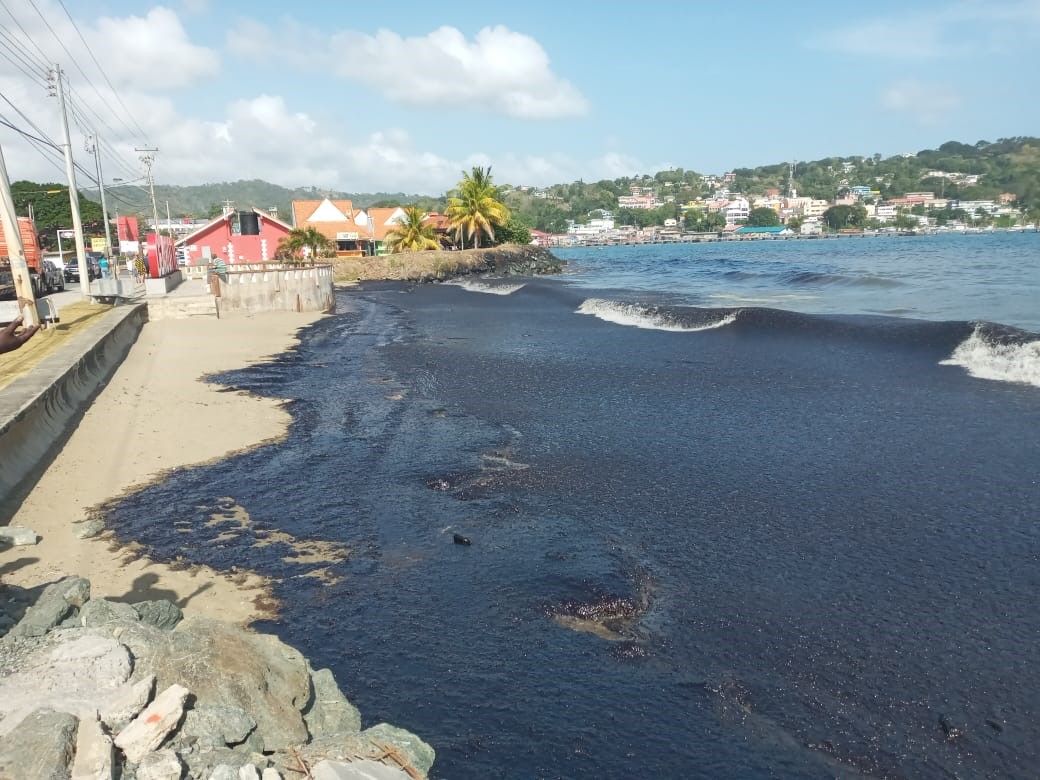(Trinidad Guardian) Thousands of gallons of bunker fuels still remain inside the overturned barge just off the coast of Tobago, more than two months after the barge, identified as Gulfstream, crashed into a coral bed, according to THA Chief Secretary Farley Augustine.
The vessel was first spotted on February 7 spewing oil along the shore. Within days, around 15 kilometres of the coast of the island was blanketed in oil.
Augustine said Tobago was still on the road to recovery and had a long way to go.
Augustine said, “Still locked into the vessel might be just around 20,000 barrels that might have not leaked out as yet. What we are working on is piping what is in the vessel out of the vessel.
“After extracting it safely we are going to focus on removing it all together. This has to happen before we can’t move to the salvaging stage.”
He said the salvaging team had drilled through seven of 12 chamber levels inside the vessel. He believes there may be more fuel than the team anticipated.
“It is delicate work, it is tricky work. The surface currents are quite dangerous and difficult to manage. We are taking caution even as we do this.
“In terms of cost that continues to be a moving target because if we still have fuel in the vessel to be extracted, we still have chambers on the vessel we have not tapped to as yet that will tell you it’s quite difficult to pin that course down.
“But, from the THA perspective we are looking to treat with some of those payments on our own anticipating, as the prime minister promised, Central Government will make the necessary allocation available to treat with something that we didn’t budget for.”
Meanwhile, the owners have not been located. Augustine told the media he eagerly awaits the release of this information.
Weeks after the spill, more than 480 species of wildlife have been safely returned to their habitats.
Caimans, snakes, frogs, and iguanas were some of the animals rescued, cleaned, monitored, and rehabilitated.
Additionally, over 51,000 barrels of liquid waste and 21,000 cubic yards of solid waste have been removed from the affected coastline.






